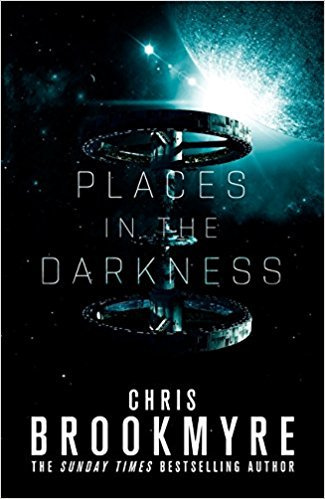By Ginna Royalty
Chapter One of “America’s Best Newspaper Writing” discuss the importance of writing on a deadline. Not only does the chapter provide tips and tricks, but also examples of writers who have practice, experience, and awards from writing on a deadline.
Richard Ben Cramer: “Shiva for a Child Slain in a Palestinian Raid”
 Richard Ben Cramer won the first award for deadline writing from the American Society of Newspaper Editors, and it is clear why. Cramer writes on a deadline, yet he is able to write with so much clarity and passion that it leads the reader wanting more.
Richard Ben Cramer won the first award for deadline writing from the American Society of Newspaper Editors, and it is clear why. Cramer writes on a deadline, yet he is able to write with so much clarity and passion that it leads the reader wanting more.
In “Shiva for a Child Slain in a Palestinian Raid,” Cramer had to be flexible and adapt to being dropped off in the rain outside of Haifa, yet was still able to convey every moment and detail he experienced to the reader. Cramer writes with emotion, fluidity, and gives the reader an inside feel in a family’s time of loss.
Cramer shows the family’s different thoughts and feelings, having them retell the story of how Na’ami dies and the heartache that they go through. When Ayelet tells her side, it appeals to the reader in a different way. A 10-year-old girl, who saw her sister dying, but was able to escape the bus and be strong for her family.
The last sentence of the story says, “And then he too rose to go out to the guests in the living room, and the telling of the story was over.” Because although in English the rite acted out by the Hadanis is called sitting shiva for the dead, shiva is really for the living, and they must now move on and focus on the living. This was a very powerful way to end the story, and Cramer reminds the reader that life must move on, no matter the circumstance.
Leonora LaPeter: “Jury Sends Santa Claus Killer to Electric Chair”
Leonora LaPeter didn’t start out in the journalism world like most others. She found her way in the back door into a circulation department and eventually worked her way up. She distinguished herself by writing a narrative rather than an article, she didn’t look at  people as sources, but rather as characters. She even utilized the children’s books she read to her daughter, which helped her with rhythm and pacing.
people as sources, but rather as characters. She even utilized the children’s books she read to her daughter, which helped her with rhythm and pacing.
In her piece “Jury Sends Santa Claus Killer to Electric Chair,” LaPeter doesn’t leave out any detail, which captivates the reader. She mixes up her paragraph and sentence length, which helps turn a regular journalism piece into a story. By having quotes from the judge, jury, family members and more, she leaves no stone unturned in making sure the reader gets all sides of the story.
David Von Drehle: “Men of Steel Are Melting With Age”
“Deadline always makes me shiver,” said David Von Drehle, a national political writer for The Washington Post. But Von Drehle is able to not only provide readers with the news but also give them the meaning behind it while writing on a deadline. He also utilizes the  timeline and plots to move a story along and is guided by the theme of the story. He searches for all of the components that will pull this story together.
timeline and plots to move a story along and is guided by the theme of the story. He searches for all of the components that will pull this story together.
The writing style of “Men of Steel Are Melting With Age” is much different than the previous examples in this chapter. Von Drehle uses a more formal, conventional tone. Yet, he is giving the reader an inside scoop into the grief and sorrow of prominent political figures. People who are supposed to always have a strong, tough front are now crying and grieving the loss of a friend. These faces have finally broken down; they are looking “quite old” or “senior.” Von Drehle is able to break this down for the reader and show a more personal side to people who have tried to avoid this for years.
Francis X. Clines: “In Belfast, Death, Too, Is Diminished by Death”
 Francis X. Clines demonstrates that there is no substitute for actually being on the scene to write a story. His writing shows that being there in person is the only way to get all the details needed. He also cautions readers to not let too many people into the story so that it doesn’t get cluttered.
Francis X. Clines demonstrates that there is no substitute for actually being on the scene to write a story. His writing shows that being there in person is the only way to get all the details needed. He also cautions readers to not let too many people into the story so that it doesn’t get cluttered.
“In Belfast, Death, Too, Is Diminished by Death,” gives the reader an inside glimpse of the hard work put into deadline writing. Clines utilizes literary phrases such as “life’s withering dangers” and alliteration such as “full of fun and flirting” to keep the reader engaged and also have the “gritty feel of reality as well as the lyricism of poetry.”
Other Deadline Writing ExamplesGallery: Storm descends on Joplin
In 2011, the Joplin Globe staff did a tremendous job covering one of the deadliest tornados in U.S. history. This story impacted the staff personally, one of the staff members was killed in the fire and nine of the 30 employees lost their homes. Yet, they were still able to come together in a time of despair and tragedy to inform the community what was happening.
The reported on the initial story, with the facts, details, and damage of the tornado, and they also followed up two days later with quotes from survivors and first-hand accounts of what happened to people. Although this was a terrible tragedy, which personally affected the staff, they wrote amazing articles under a deadline.
9 Dead In Manchester Workplace Shooting
In 2011, the staff of the Hartford Courant gives another great example of deadline writing. The staff covered Omar Thornton’s rampage that left nine co-workers dead, the worst mass murder in Hartford’s history. Not only did they begin writing about the story minutes after it occurred, but they dove into it headfirst, getting quotes and backstory, trying to figure out what caused him to open fire on his co-workers.
They spoke to employees, family members and friends. They looked at every possible angle and were still able to get the story out by 11 pm that same day. The quotes from other employees made the article raw, ending with “The tears were flowing in all of our eyes,” [John] Hollis said. “We talked about some people who we knew for many years, who we knew had been shot. This is a tragedy that will never, never be totally understood.”
Theater shooting suspect: A quiet man who authorities say harbored a deadly plan
When tragedy strikes, news outlets have to be ready to report. And that is exactly what The Denver Post did when a gunman opened fire in a movie theater in Aurora, Colorado. The staff came at the horrendous story in different ways, posting multiple articles trying to make sense of the heartbreak. They shared insight into the life of James Eagan Holmes, interviewing family, neighborhoods, and other people who knew him.
They tried to understand Holmes’ life so that they could understand why he would do this. The Denver Post went past the surface level information to try and give readers an understanding of what could have happened. The articles varied with their information, providing information and details from the people at the movie theater as well. The Denver Post took all sides of the story into considered and provided every possible angle.
Advertisements Share this:


![Okey Ndibe [Photo: The Paradigm]](/ai/032/360/32360.jpg)

